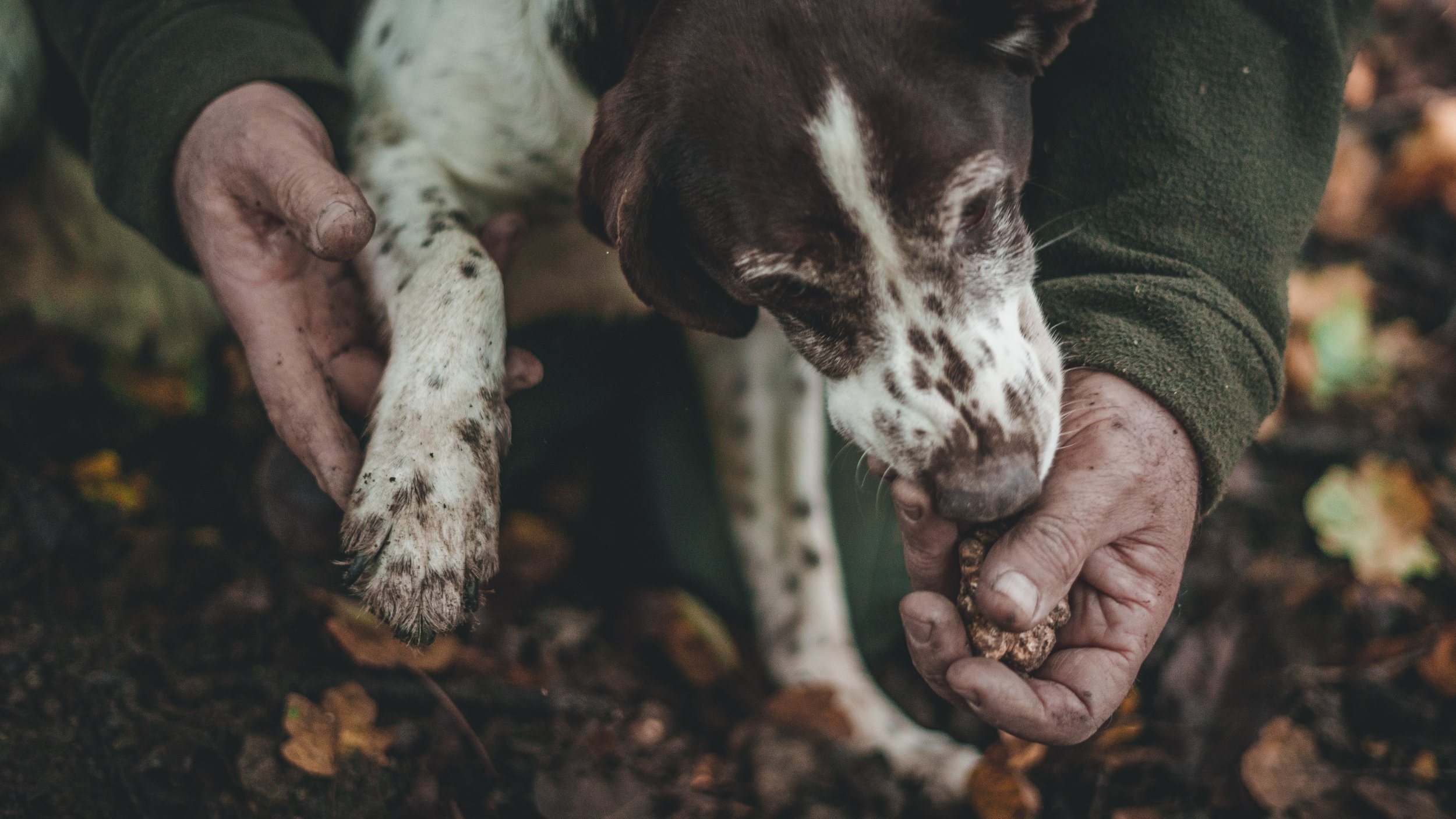White Truffle
Diamond of Italy
Deeply fragrant yet delicately growing wild in the forests of northern Italy’s Piemonte region, White truffles are edible fungi used in the gourmet food sector and renowned by chefs and restauranteurs all over the world. More recently they are also being used by the skin care industry. The ingredient is so important to the local communities around Alba, Italy that the local saying goes ‘without the Truffle, Alba dies.’
The Alba truffle, as it is also called, grows only in this part of the world because of the special microclimate of the surrounding forests. It cannot be cultivated and so it is collected from the wild, by ‘truffle hunters’ that use their beloved white dogs – which can be more easily seen at night – to sniff out the truffles that lie just a few centimeters below the surface of the ground. Truffle hunting takes place during the wet and cold season, usually from October to December. However, in 2021 the rainfall has diminished due to climate change and the soil has been dry, leading to more difficulties for the dogs and their hunter-humans to easily dig out these fragile and highly valued truffles without damaging them.
The very use of dogs in the ‘hunting’ of truffles makes this one of the more unique types of wild-collected ingredients from biodiversity that are used in food or beauty. The dogs are trained as puppies to be highly sensitive to the smell of the truffles, usually by giving them treats of the truffles as food. Hunting happens at night so that it is quiet, without nearby workers or tourists, so the dog can concentrate and not be distracted by other sounds. A dog will find a spot and begin to dig out the truffle that lies just under the surface and close to a tree. Sometimes, the hunter will also stoop down and begin to help the dog with the use of a small spade. A good hunting night would result in one or two small truffles collected from different places in the woods. When truffle hunters find 2 or 3 truffles growing together in one spot, they consider this a very lucky night. Those dates are often firm in the memories of truffle hunters, who can name them when asked. When truffle hunters dig out the truffle and place it carefully in a cloth sack, they are cautious to leave the spores so that the truffle can re-grow again.
A local nonprofit, Save the Truffle, is partnering with UEBT member brand fresh to implement a reforestation project in Alba to support the good conditions needed for the truffles to grow. This includes building partnerships with local landowners, who are often wine growers with adjacent forested strips of land that are not planted with grapes. The nonprofit provides maintenance of the forests including removal of invasive species and planting of endemic trees such as Linden, Oak and Poplar in the hope to mimic the soil conditions where truffles are growing nearby.
In recent years in Alba, which also relies heavily on wine tourism, there has been an increase in the number of wineries dotting the countryside, and fewer patches of forest. While many wineries practice organic or biodynamic farming, some are still using agrochemicals that can also affect nearby forests. However, local truffle hunters say that the changing climate is the more pressing challenge for the truffle industry. As the humid, wet and muddy conditions they favor for truffles become drier, truffles do not grow well, and the industry struggles. However, new collaborations between forest owners, local groups, brands such as fresh and other industry partners such as chefs and restaurants, are shining a light on the Alba Truffle and its importance for the forests of northern Italy and the local communities that depend on them.




